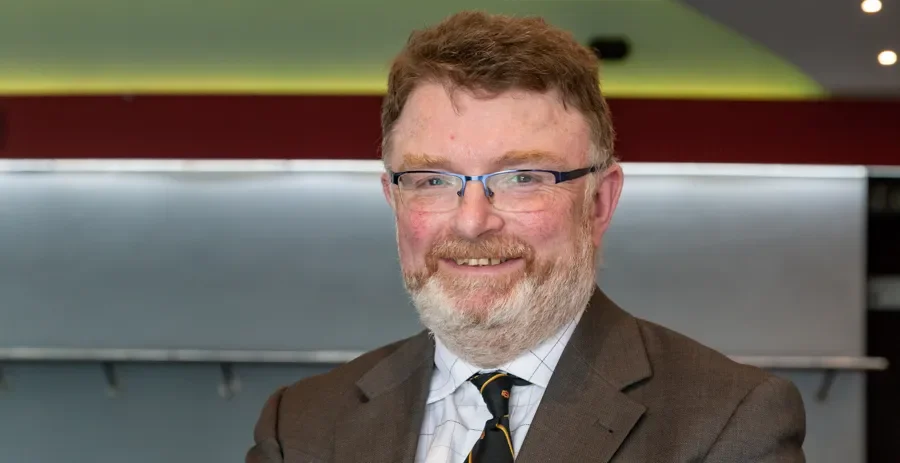

Spotlight on Research: Constructing the Beauty of Biology in Education
Dr Thomas McCloughlin, Assistant Professor in Biology & Education at Dublin City University - St. Patrick's Campus, is this week's Spotlight on Research interview.
What area do you work in?
“My work encompasses two areas, science education and biology. I am interested in how people construct ideas and concepts of biology as they learn, and how we can make classes and lessons more engaging by using the aesthetic of biology and science in general.”
How did you develop an interest in that?
“I studied Applied Biology at the University of Ulster, it was a great course with lots of diverse modules, and my majors included parasitology and botany. That’s where I developed an interest in the beauty of nature, the biosphere, biology and working with plants and animals. There’s so much we can learn by looking at whole animals or plants, I think we need to bring more of that back into how we teach children about biology and help them to construct their understanding of the world around them.”
What kind of research are you doing on that today?
“Part of my research captures information about how students in school and students of education learn about nature, living things and biology. For example, if you ask students about the features of animals and plants that they consider important, you can look at the cognitive aspects and build models about how they learn. I combine lots of different approaches when looking at these kinds of questions - not only biology and education - but also statistics, psychology and philosophy.”
What have you been finding?
“The findings support the idea that humans don’t just swallow ‘Information’ like a pill, they construct information in order to 'learn' it, and we can see that people construct in different ways. This means that we should be building more degrees of freedom into how we educate children, and we can do that by going back to the more traditional practices of taking children outside for walks to explore nature, looking at entire organisms like trees and worms, setting up wormeries, making collections and using art to help them learn about the natural world around them. I completely understand that bringing children outside eats into classroom time, and that can be a challenge for teachers, but our sensory ability to navigate the world around us is just as important as literacy or numeracy for how we live our lives.”
Do you teach primary school students too?
“Yes, I have a weekly class with our ‘on-campus’ primary school here, St Patrick's Boys' National School, where I get the children outside to explore and build things. Just this week we built giant catapults together out of pieces of wood.”
What activities to you do with the students of education at DCU?
“Biodiversity is a strong element of what I teach, so that can become a core part of their lesson plans. We go outside quote a bit, for the specialists we go on fieldtrips and for some we get them to encourage earthworks to come to the surface of the grass to study them. With others, I am getting them to put together a 'herbarium’ and with another group we are looking to restore an acre of woodland that was lost to recent development on campus. That will get very busy in the coming weeks and we will be engaging with members of the public to pitch in and help us to plant trees in May.”
What other projects are you working on, apart from the education-focussed ones?
“Interestingly, to me anyway (!), I am revisiting an area I worked on years ago when I was in the University of Ulster. I researched eye-flukes in fish, an infection that can cause problems for fish farmers. It is known as ‘pop-eye’ because the fish’s eye swells up. I am going back to my old data and using new statistical techniques and methods on it. I am also re-examining hundreds of light- and electron micrographs with a new to publishing their details. Finally, I am working on various aspects of herbarium studies, which connects with my education work.”
What are the challenges of research?
"To remain authentic to the purpose of science. As [quantum physicist] Paul Dirac said about his equations, yes they should work but they must also be beautiful. For my work to be authentic it must be useful, worthy, but also relate to the beauty of the scientific process and of the natural world.”
What is your typical day like?
“Frantic! Just today I had a Skype call with a collaborator in Slovenia about a proposal we are preparing for European Horizon 2020 funding. We hope to do a project on the history of how various concepts in biology were discovered to see how we can use that in education. Then I spoke with Forest Friends in Drumcondra who are supplying us with 50 oak trees for our reclamation project. Next I worked with second-year education students on how to use bird-feeders, mini-beast hotels and bird boxes in lessons and avoid the pitfalls of rats and squirrels that could undo the work. After that I did a tutorial, now I am talking to you and then for the rest of the day I will be buried in my office writing a grant application for another project.”
And what do you do to get a break?
“As you might have guessed, I am very interested in art and beauty. For more than a decade now I have been find out more about Byzantine art and that journey has brought me to Greece and Cyprus to learn from master iconographers. That’s a huge interest of mine and I give classes on it in my adopted hometown of Lusk in Dublin.”
